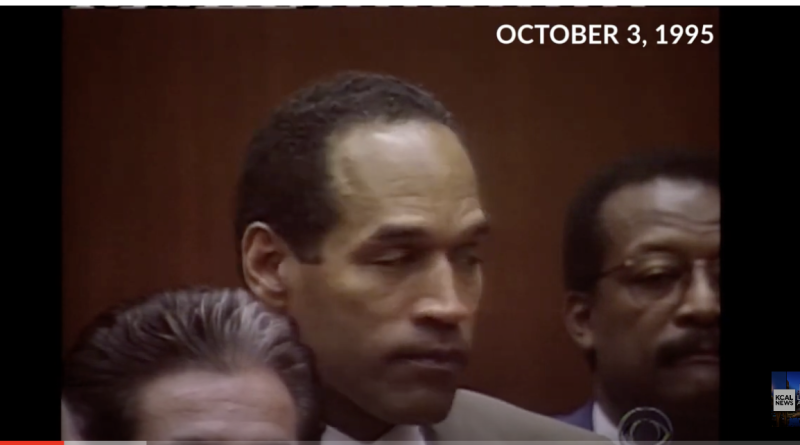O.J. Simpson’s Verdict Showed us the Distance in America’s Racial Divide
BALTIMORE – The verdict that acquitted O.J. Simpson of murdering two people, one of whom was his wife, painfully revealed the lingering American racial divide as we’d rarely seen it before.
And we haven’t precisely felt it again until yesterday’s news that Simpson, arguably the greatest running back in football history, died at 76. He lived the life of an American hero until it became the stuff of Shakespearean tragedy.
Before his courtroom acquittal, America had been through decades of racial pain: of fierce political fights on Capitol Hill, of assassinations and street riots, of the ugliness of adults screaming at children who only wanted to attend previously segregated schools, of housing discrimination and job exclusions.
But this was different. It was turn-of-the-century history written after we thought we’d healed some of the old wounds. We wanted to imagine America was slowly learning to embrace the notion of a multi-racial society, and that we didn’t have to look at every public confrontation through the lens of racial grievance.
The O.J. verdict of innocence, when so much of the evidence seemed so clearly to convict him, and the joyous hurricane response of so many Blacks, in the face of white people’s astonishment, left the whole country staggered.
Blacks’ response seemed to tell white Americans, “You see what we’ve been putting up with all these years, with brutal cops and bigoted juries? Here’s a taste of your own medicine.”
But so much of that history had been conducted when white Americans weren’t listening, or didn’t care. Or it was done out of sight. The cops weren’t pulling out their nightsticks and beating people over the head when audiences were watching. But the O.J. verdict, from a jury with 10 Blacks on it, was delivered in real-time to a TV audience of 90 million people.
And yet the entire history of the O.J. Simpson criminal case never should have happened.
Long before Nicole Simpson and Ronald Goldman were murdered, Los Angeles police were called to the Simpson home scores of times. They found Nicole there, beaten and terrified. Once, on New Year’s day, 1989, the cops found her, badly beaten and half-naked, hiding in bushes outside their home.
“He’s gonna kill me,” she cried.
Convicted of spousal abuse, he was let off with a fine and probation. By the time O.J. came to trial for murder, prosecutors reportedly had a list of 62 incidents of O.J. abusing his wife.
Why wasn’t he already in some prison cell with a history of 62 cases of abuse? Why? Because he was O.J. Simpson, maybe the greatest running back in football history. And such people are treated differently than the rest of us.
But the hypocrisy doesn’t stop there. There’s a pretty good chance O.J. suffered from chronic traumatic encephalopathy, CTE, the degenerative brain disease in football players characterized by a variety of symptoms, including explosive and impulsive behavior and impaired judgment.

Among those who claim O.J. had it was Dr. Bennett Omalu. He’s the doctor whose discovery of CTE inspired the movie “Concussion.” His findings also set him into a historic confrontation with pro football owners who spent years denying there was any connection between the blood sport of football, with its routine head banging, and any possibility of brain damage.
“I would bet my license” on O.J. suffering from it, Omalu said back in 2016. “He was exposed to thousands of blunt force trauma of his brain.”
So are thousands of other football players. Many cities with a history of pro football have seen their former heroes descend into overt brain dysfunction. Around here, the most publicized case was former Baltimore Colts tight end John Mackey.
As it happens, Mackey invited himself to lunch with my wife and me one day at the old Donna’s outdoor restaurant at Cross Keys. He simply sat himself down at our table. He couldn’t have been more charming – except that, over the course of about 45 minutes, he repeated the same 5 or 6 sentences over and over and over and hadn’t the slightest idea he was doing it.
CTE can manifest itself in lots of different ways. Mackey became the gentlest of men after a rugged career. By all measures – except the one that counted, in a criminal courtroom – O.J. Simpson became a violent man, even before the night his bride was attacked for the final time.

Michael Olesker, columnist for the News American, Baltimore Sun, and Baltimore Examiner has spent a quarter of a century writing about the city he loves.He is the author of several books, including Michael Olesker’s Baltimore: If You Live Here, You’re Home, Journeys to the Heart of Baltimore, and The Colts’ Baltimore: A City and Its Love Affair in the 1950s, all published by Johns Hopkins Press.

